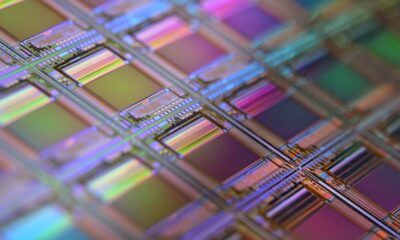BUSINESS
All the different types of Solar Panels
There are three main types of solar panels: monocrystalline, polycrystalline, and thin film. Monocrystalline panels are made out of a single crystal structure and tend to be the most efficient type, while polycrystalline panels are made out of multiple crystals and have a slightly lower efficiency.
Thin-film panels use a layer of photovoltaic material that is much thinner than traditional panels, making them less efficient but also cheaper and more flexible in their application.
Additionally, there are hybrid solar panels that combine different technologies such as concentrating PV (CPV) or organic PV (OPV), which can offer even higher efficiencies but at a higher cost.
Ultimately, the best solar panels for a particular application will depend on factors such as cost, efficiency, and space constraints.
What to consider when choosing a specific solar panel type:
– Cost
The cost factor is very important because it will determine the overall cost of installation and the return on investment. Monocrystalline panels tend to be the most expensive, while thin-film panels can be the cheapest option.
– Efficiency
Monocrystalline panels are typically the most efficient, followed by a polycrystalline and then thin film. However, efficiency may not always be the top priority depending on the specific application and available space for panel installation.
– Space constraints
Thin film panels can potentially offer more flexibility in terms of installation because they are thinner and can potentially be integrated into building materials or curved surfaces. Monocrystalline and polycrystalline panels, on the other hand, may require a larger amount of flat surface area for optimal performance.
– Additional technology
Hybrid solar panels that incorporate concentrating PV or organic PV can offer even higher efficiencies but at a higher cost. It is important to weigh the potential benefits against the added expense.
Overall, it is important to carefully consider all of these factors in order to choose the best type of solar panel for a particular application.
Pros and Cons of Solar Panels in Australia
– Pros:
+ Renewable and sustainable forms of energy
+ Can lead to reduced electricity bills
+ Can potentially earn income through government incentives such as feed-in tariffs
+ Can help reduce carbon emissions and combat climate change
– Cons:
+ Initial cost of installation can be expensive
+ Efficiency can be affected by location, weather, and positioning of panels
+ Maintenance may be required in order to keep panels functioning properly
+ Some concern over potential impacts on wildlife, particularly with large-scale solar farms.
Conclusion
Overall, the use of solar panels in Australia can provide numerous benefits and help move towards a more sustainable energy future.
However, it is important to carefully consider all factors before making the decision to install solar panels, such as initial cost and potential impacts on the environment.
Ultimately, the choice to use solar energy should be made with careful consideration and thought for both individual and societal benefits.
Make sure to share this post if you found it helpful in understanding the different types and considerations of solar panels!
Disclaimer: This is not professional or legal advice. It is recommended to do further research and consult a professional before making any decisions related to solar panel installation.

-

 EDUCATION3 months ago
EDUCATION3 months agoThe Role of Certification in Modern Health and Safety Education
-

 GUIDE3 months ago
GUIDE3 months agoIce Cream Truck Wraps That Attract Customers Instantly
-

 GUIDE3 months ago
GUIDE3 months agoEnergy-Efficient Commercial Coolers for Business Performance
-

 TECH3 months ago
TECH3 months agoInnovative Uses for Patterned Silicon Wafers in Technology